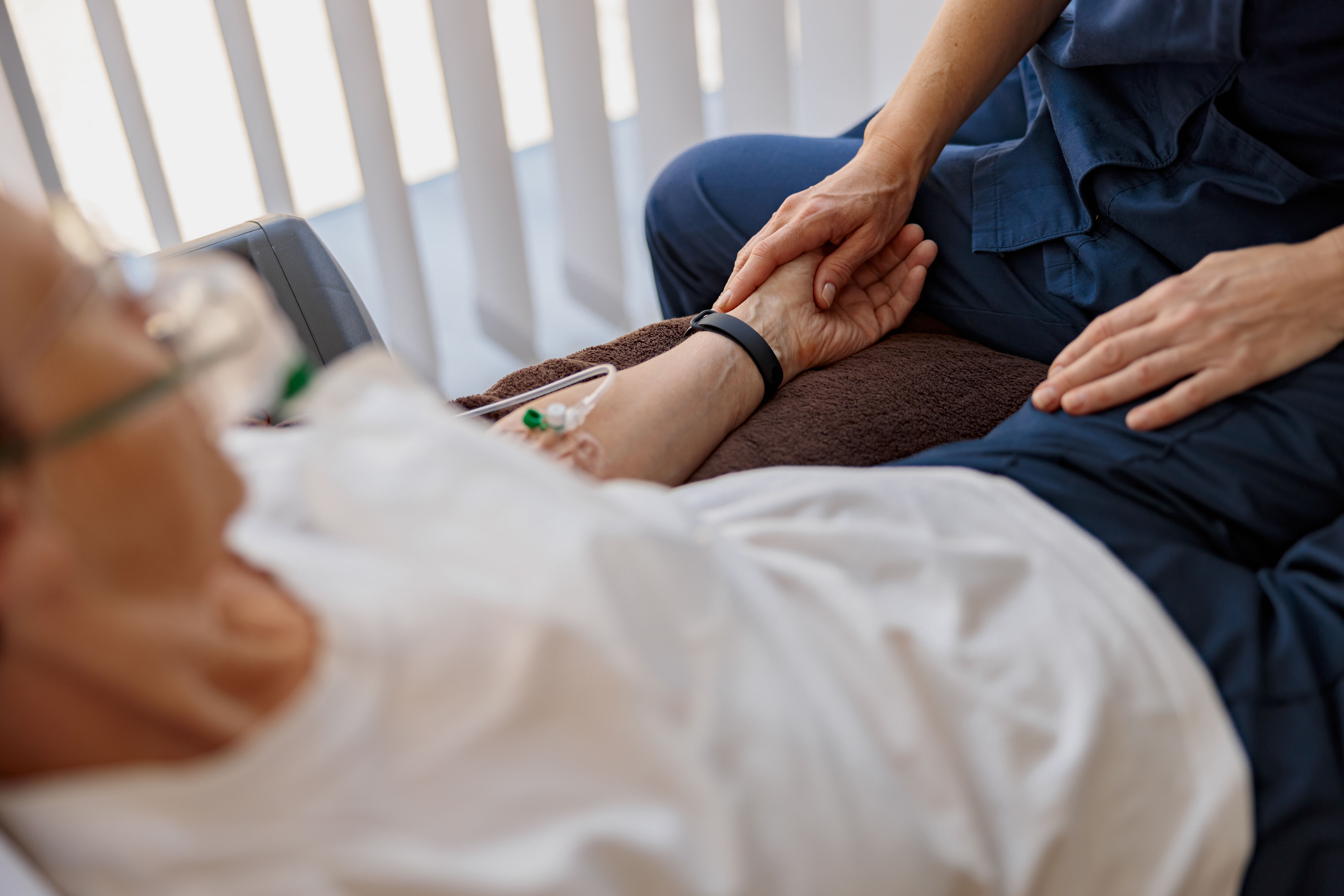What are the Four Levels of Hospice Care?
Hospice care is a specialized type of healthcare designed to provide comfort, dignity, and support to individuals with terminal illnesses. Unlike curative treatments, hospice focuses on pain management, symptom relief, and emotional and spiritual care for both the patient and their loved ones.
To ensure every patient receives the appropriate level of care based on their condition, hospice services are divided into four levels: Routine Home Care, Continuous Home Care, General Inpatient Care, and Respite Care. These levels are designed to meet different medical and personal needs, whether a patient requires ongoing support at home, intensive symptom management, or temporary inpatient care.

Routine Home Care
Routine Home Care is the standard level of hospice care provided to most patients. It allows individuals to remain in a comfortable and familiar setting, typically their home, a family member’s home, or a residential facility, while receiving necessary medical and emotional support.
What It Includes:
Regular visits from a hospice nurse to monitor symptoms and adjust care plans.
Hospice aides to assist with personal care, such as bathing and dressing.
Pain management and symptom control through medications and treatments.
Emotional and spiritual support from social workers, chaplains, and volunteers.
Access to 24/7 on-call hospice support for urgent concerns.
Who Qualifies?
Patients who have been diagnosed with a terminal illness (with a life expectancy of six months or less) and wish to focus on comfort rather than curative treatment. Routine Home Care is ideal for individuals with stable symptoms that can be managed outside of a hospital setting.
This level of care is flexible, meaning patients can receive an increased level of support if their condition worsens or transition to another level of hospice care as needed.
Continuous Home Care (Crisis Care)
Continuous Home Care, also known as Crisis Care, is a short-term, intensive level of hospice care provided at home when a patient experiences a medical crisis. This option is designed to manage severe symptoms that require immediate attention but do not necessarily require hospitalization.
What It Includes:
Around-the-clock nursing care (minimum of 8 hours in a 24-hour period).
Increased medication management to control severe pain, breathing difficulties, or agitation.
Hospice aides providing hands-on care and support for daily needs.
Coordination with hospice physicians to adjust treatment as needed.
Who Qualifies?
Patients experiencing a sudden or severe decline in their condition, such as:
Uncontrolled pain that standard medication adjustments cannot manage.
Persistent nausea or vomiting.
Severe respiratory distress or difficulty breathing.
Acute agitation, restlessness, or delirium.
Continuous Home Care is meant to stabilize the patient’s condition so they can return to Routine Home Care. If symptoms cannot be managed effectively at home, the patient may be transitioned to General Inpatient Care.
General Inpatient Care
While hospice is typically provided in the home, there are times when symptoms become too severe to manage outside of a medical setting. General Inpatient Care is a short-term level of hospice care provided in a hospital, hospice facility, or skilled nursing facility for patients who need round-the-clock medical supervision.
What It Includes:
24/7 nursing care to manage severe pain or distressing symptoms.
IV medications, specialized treatments, and medical equipment for symptom control.
Emotional and spiritual support from social workers, chaplains, and hospice staff.
A comfortable, supportive environment designed to provide dignity and peace.
Who Qualifies?
Patients whose symptoms are too complex to be managed at home, including:
Uncontrolled pain despite medication adjustments.
Severe nausea, vomiting, or bowel obstruction.
Advanced respiratory distress requiring medical intervention.
Severe agitation, confusion, or restlessness.
Once symptoms are stabilized, patients can transition back to Routine Home Care or Continuous Home Care, ensuring they continue receiving compassionate support in the setting of their choice.
Respite Care
Caring for a loved one in hospice can be physically and emotionally exhausting for family caregivers. Respite Care offers temporary relief by providing short-term inpatient care for the patient, allowing caregivers to rest and recharge.
What It Includes:
A short stay (up to five days) in a hospice facility, hospital, or skilled nursing home.
Full hospice care, including medical management, comfort measures, and emotional support.
A safe and welcoming environment for patients while caregivers take a needed break.
Who Qualifies?
Patients receiving Routine Home Care whose caregivers:
Need temporary relief due to burnout or personal obligations.
Are experiencing their own health issues and require time to recover.
Need time to travel or handle personal matters.
Respite Care ensures that caregivers get the support they need while their loved one continues to receive the highest level of compassionate care.

How to Determine the Right Level of Hospice Care
Choosing the right level of hospice care can feel overwhelming, but hospice professionals are here to guide families through the process.
Factors to Consider:
Current symptom management: Is the patient’s pain or discomfort controlled with standard hospice care, or is a higher level of care needed?
Caregiver capacity: Can family members provide the necessary care at home, or is additional support required?
Medical needs: Does the patient require advanced medical intervention, or can symptoms be managed at home?
Since a patient’s condition can change over time, hospice teams work closely with families to adjust care levels as needed. The goal is to ensure comfort, dignity, and the highest possible quality of life.
Your Loved One Deserves the Best in Home Hospice Care
At Anvoi Health, we understand that every hospice journey is unique, and we’re here to provide compassionate support. Call us today to discuss your home hospice care needs or schedule a consultation. We’re here for you, every step of the way.









